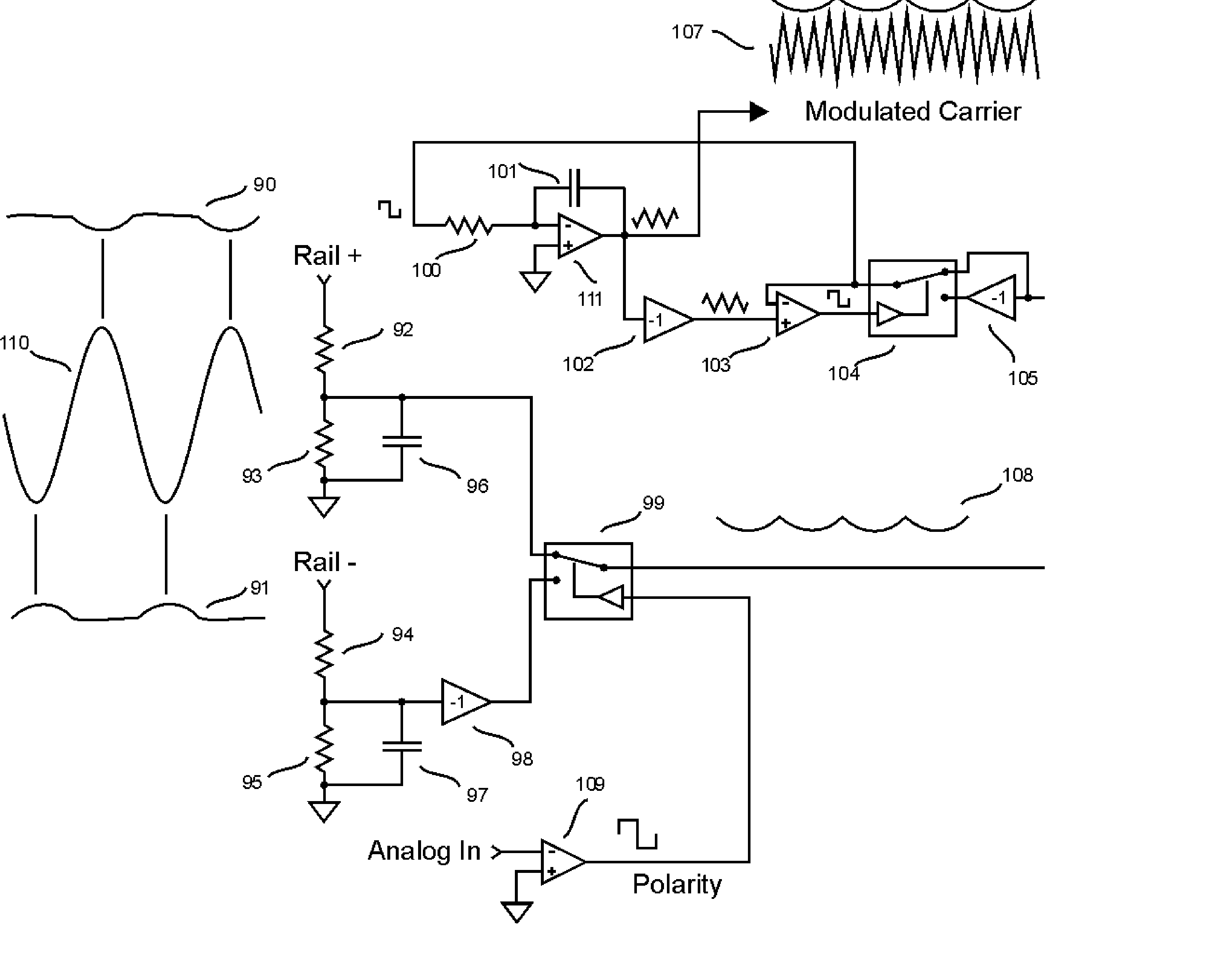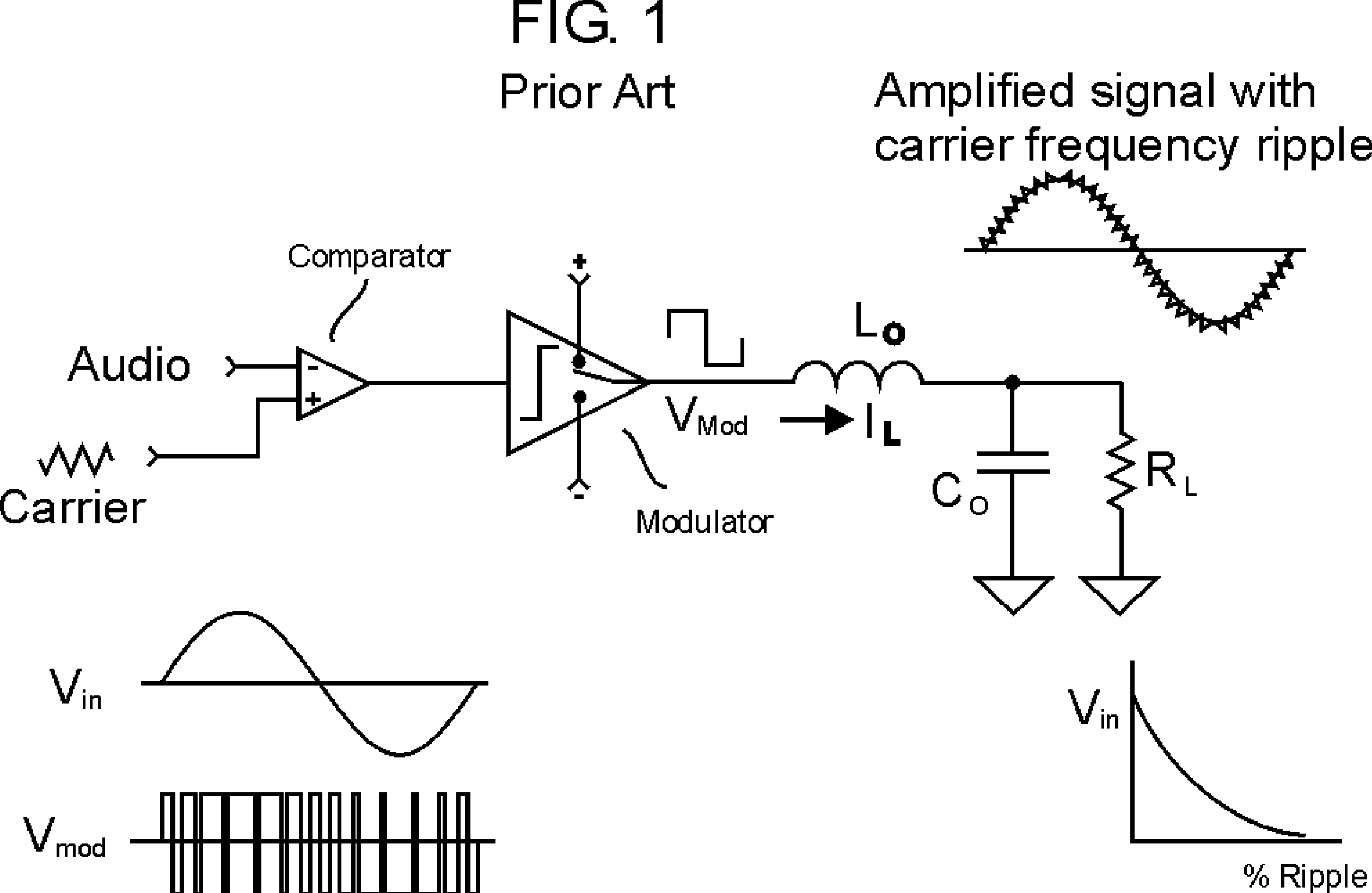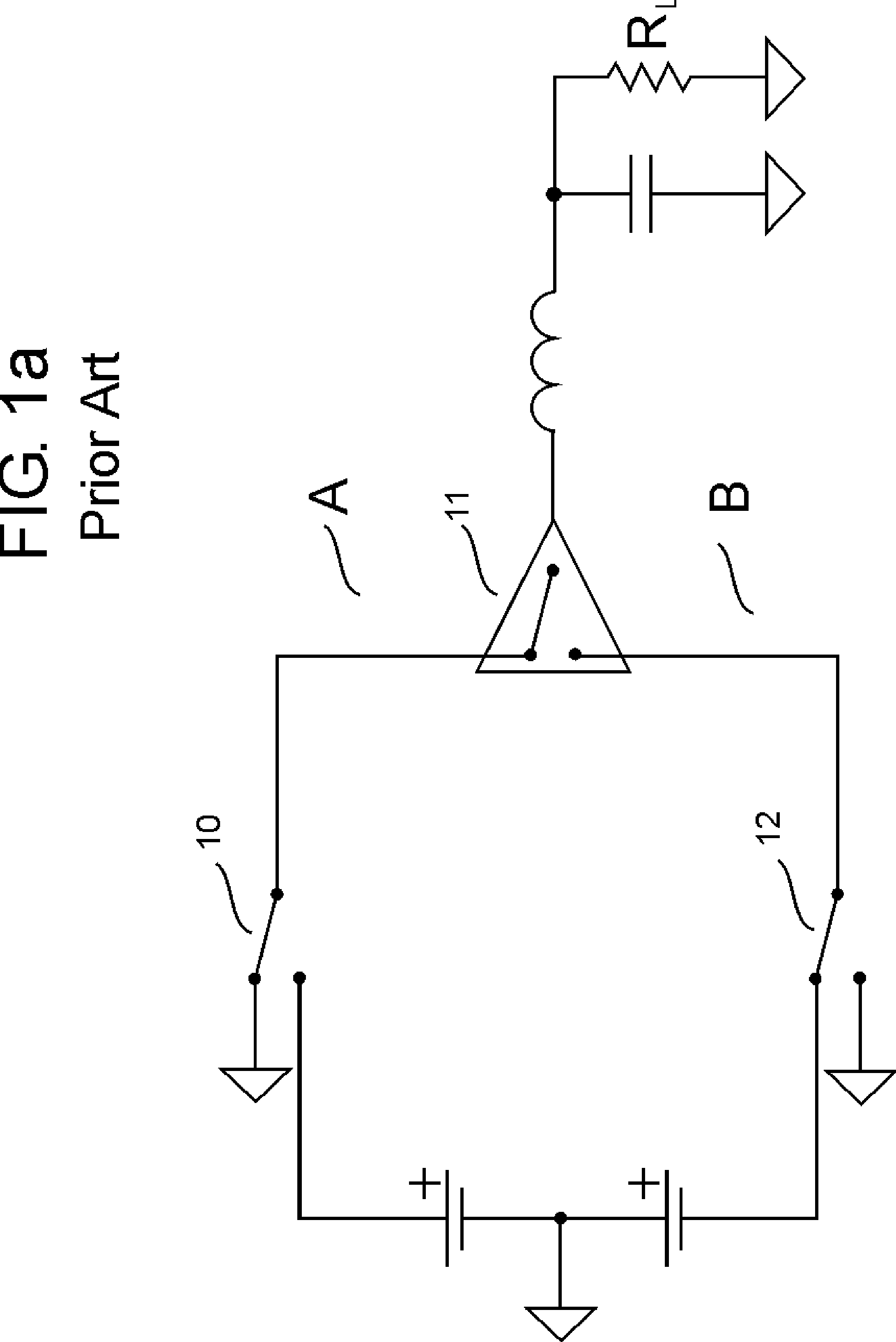Improved Class BD Amplifier
a technology of amplifiers and amplifiers, applied in the field of electromechanical devices, can solve the problems of increasing reducing the efficiency of class a and ab amplifiers, and requiring significant heat sinking and sometimes forced air cooling, so as to parts, reduce the cost of components, and eliminate to the first order any distortion
- Summary
- Abstract
- Description
- Claims
- Application Information
AI Technical Summary
Benefits of technology
Problems solved by technology
Method used
Image
Examples
Embodiment Construction
[0053] The current invention improves the prior art Class BD related to:
[0054] 1. The Class BD output stage
[0055] 2. Distortion introduced by supply ripple and noise
[0056] 3. Notch Distortion
[0057] Improved Class BD output stage:
[0058] In prior art for Class BD, the output inductor current is passed through at least two switching devices. In this design, current is passed through a single switching device, except in the low power ground state. In the ground state, current is passed through two switching devices in series. (See FIG. 16) The three states are as follows:
1State SW1 (54) SW2 (52) SW3 (53) SW4 (55) POS ON OFF ON OFF GROUND OFF ON ON OFF NEG OFF ON OFF ON
[0059] In the positive state SW3 (53) could be either on or off, likewise in the negative state SW2 (52) could be on or off. The combination illustrated above simplifies the drive circuitry, requiring just an inverter to drive each grounding state as in FIG 10. The advantage of this design is that in the positive or negati...
PUM
 Login to View More
Login to View More Abstract
Description
Claims
Application Information
 Login to View More
Login to View More - R&D
- Intellectual Property
- Life Sciences
- Materials
- Tech Scout
- Unparalleled Data Quality
- Higher Quality Content
- 60% Fewer Hallucinations
Browse by: Latest US Patents, China's latest patents, Technical Efficacy Thesaurus, Application Domain, Technology Topic, Popular Technical Reports.
© 2025 PatSnap. All rights reserved.Legal|Privacy policy|Modern Slavery Act Transparency Statement|Sitemap|About US| Contact US: help@patsnap.com



